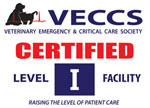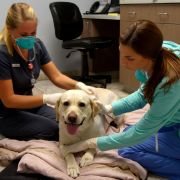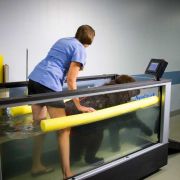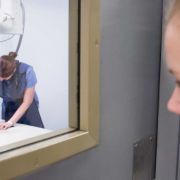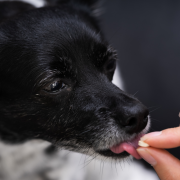Date:
By Alan Green and Lisa Olsen
No matter where we live, it is important to understand the potential risks of that environment. As more and more people inhabit the Lowcountry, we must be aware of these risks to us and our pets. This month’s guest contributor is Dr. Lisa Olsen. Dr. Olsen is one of CVRC’s critical care specialists. Her topic is important to both pet owners and pets. Snakebites are extremely common. At CVRC we saw approximately 150 such incidents in 2016. Dr. Olsen does a great job at explaining this important and interesting subject.
As the weather changes, so do the threats to our pets. With warmer weather come the re-emergence of species that have lain dormant during the winter months. Here in South Carolina, we are home to five of the deadliest snakes in North America, which include the cottonmouth (water moccasin), rattlesnakes (timber rattlesnake, eastern diamondback rattlesnake), copperhead and coral snake. In August of last year, a six-year-old shepherd mix named Basil, learned the hard way just how dangerous these animals can be.
Here in the Lowcountry, snakes pose an increasingly more common hazard in the spring and summer months. While found more abundantly in rural communities and undeveloped areas, urban pets are not free of risk. The most common species encountered in Charleston is the copperhead, which possesses a toxin known to cause severe tissue damage (even slough), as well as clotting problems and injury to the organs that process the toxin, though many pets make a full recovery with proper treatment. Rattlesnakes, however, possess a potent toxin that suppresses the nervous (brain and nerves) and respiratory systems, causing a rapidly progressive loss of consciousness and breathing difficulties, which are very often life threatening. Similar respiratory difficulties develop with coral snake envenomation. Though treatment of copperhead snake bites includes primarily fluid therapy, pain medications and, if necessary, wound care, rattlesnake and coral snake bites require rapid and much more aggressive life-saving therapies.
Several “old wives tales” exist regarding treatment of venomous snakebites at home or in the field. These include application of ice to the bite site to constrict blood vessels and slow spread of the toxin, making cuts in the skin near the bite wound to encourage the toxin to be “bled” from the body, directly sucking on the wound to try to draw the venom out through where it entered, or applying a tourniquet to the limb above the bite to contain the toxin and prevent its spread through the body. However, research has shown that these steps do not improve outcome, rather can cause worse illness or make treatment more difficult in the long run. Rather than these, immediate and aggressive evaluation and treatment by a veterinarian is advised. At Charleston Veterinary Referral Center, our doctors are trained and experienced in dealing with snake bites, as well as all other pet-related emergencies that may arise We will work as an extension of your primary veterinarian to provide exceptional care to the pets of the Lowcountry — and whether on weekends, holidays, overnight or other times your primary vet isn’t available, you may rely on us to be open to address any questions or concerns you have.



